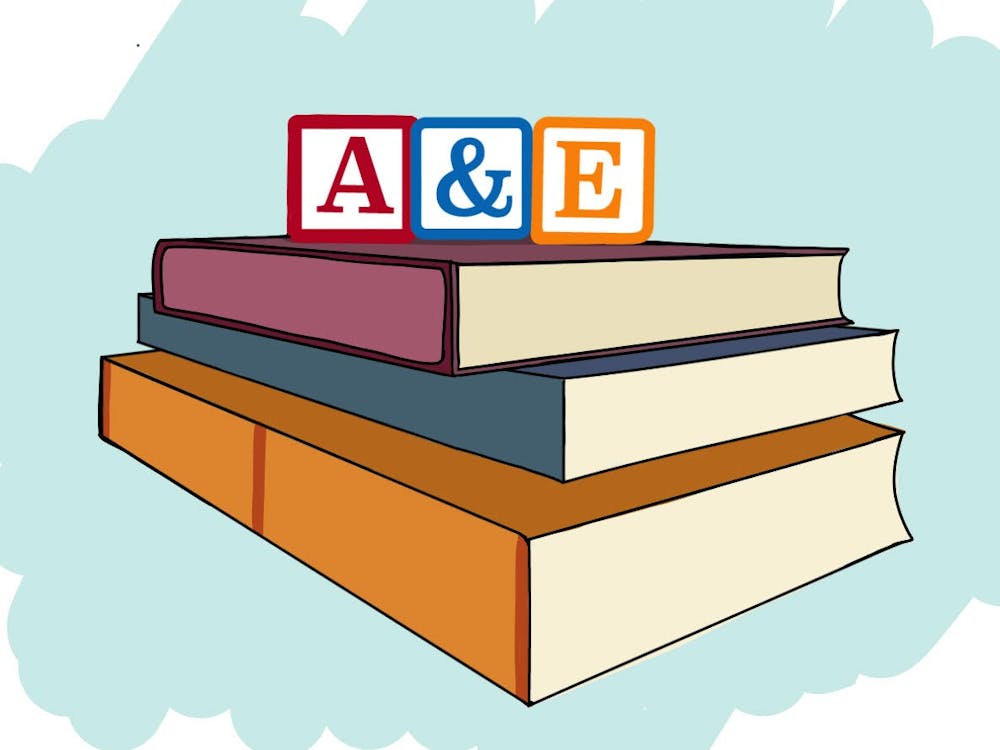September has come and gone, and now University students face the most frightening time of year. Ghouls, ghosts, witches, werewolves, mummies and — scariest of all — midterms await. This year, don’t let the exam season scaries surprise you. Get ahead of the midterm mayhem and embrace the frights that the month of October can offer. Here are three books to help you delight in all the horror this time of year brings.
“Plain Bad Heroines” by Emily M. Danforth
It is 1902 when Mary MacLane publishes her shocking diary, and it seems as if this unsuitable book has only brought unsuitable behaviors to the Brookhants School for Girls. It quickly becomes clear that the danger of this book may not only be its influence on the students though, as death and tragedy are soon to follow. Rumors of a curse reach the students’ parents, and the school is closed — but who is to say how long it takes for a curse to lift?
Over a hundred years later, Merritt Emmons — a young queer author — publishes a book on the subject, and the public develops a renewed interest in the supposedly haunted happenings of Brookhants. With a film director signed onto the project, A-list celebrity Harper Harper cast as the main character, and former child star Audrey Wells as her love interest, the film is bound to be a success. That is, until the line between fiction and reality blurs on set, and it seems as if the fabled curse may be more than just the rumors from a history long ago buried.
This book is perfect for lovers of gothic literature and 80s cult-classic horror films alike. In a weaving narrative, Danforth vividly ties together two scary stories — one from the past and one from the present — creating one thrilling story that combines both historical and contemporary representations of queer women.
“Patricia Wants to Cuddle” by Samantha Leigh Allen
It is elimination week for the reality TV show “The Catch” as four beautiful women compete for the love of the show’s lead this season, Jeremy. The week is filled with all the drama a producer could dream of — spilled secrets, cat-fights and heartfelt monologues that are just certain to draw in more viewers. The week is perfect until a contestant mysteriously goes missing in the night.
One by one, the search party sent after her vanishes as a monster hunts the cast and crew. Now, winning “The Catch” will not mean capturing the heart of Jeremy — it will mean surviving the week without being ripped limb from limb.
Allen marries the feeling of watching reality television as a guilty pleasure to the feeling of reading a cutting satire in “Patricia Wants to Cuddle.” It is the perfect read after a long fall break binge-watching “The Bachelor in Paradise” and “Love Island.” It is more than just a comical take on the industry of reality TV, though — it’s a beautiful story about love that continues after death and the beauty to be found in the misunderstood.
“Woman, Eating” by Claire Kohda
At 23 years old, Lydia decides to make a life of her own. Gone are the days of obeying the orders and living by the anxieties of her mother. She moves to London, gets an internship and rents a studio space, trying to ignore the voice of guilt in her head telling her to visit her mother.
Life by herself is harder than she thought it would be, though, and the hardest part of it seems to be putting food on the table. Not only is she a broke intern at an art museum, but she also has some particular dietary restrictions making it difficult for her to get food — she’s a vampire, and she desperately wishes she wasn’t.
Lydia spends her life dreaming of human food and depriving herself of the blood she needs to survive, all the while struggling to connect with the other artists in her studio and navigate the human world. The horror of this novel lies not within Lydia’s propensity to suck a little blood every once and a while, but in her isolation and the lack of control she comes to find adults have over their own lives.
Kohda’s novel may be shelved in the horror genre at your local bookstore, but its true genre is harder to pin down. It features elements of the gothic tradition — and blood-sucking monsters may be at its forefront — but more than anything it is a psychoanalysis of the struggling artist trying to find their own identity in their twenties. Truly though, what could be more horrifying than that?
October is a scary time of year. If you find yourself drowning in an ocean of assignments, look to books for your stress relief, and remember that the horrors of homework are nothing compared to the frights of fiction.






